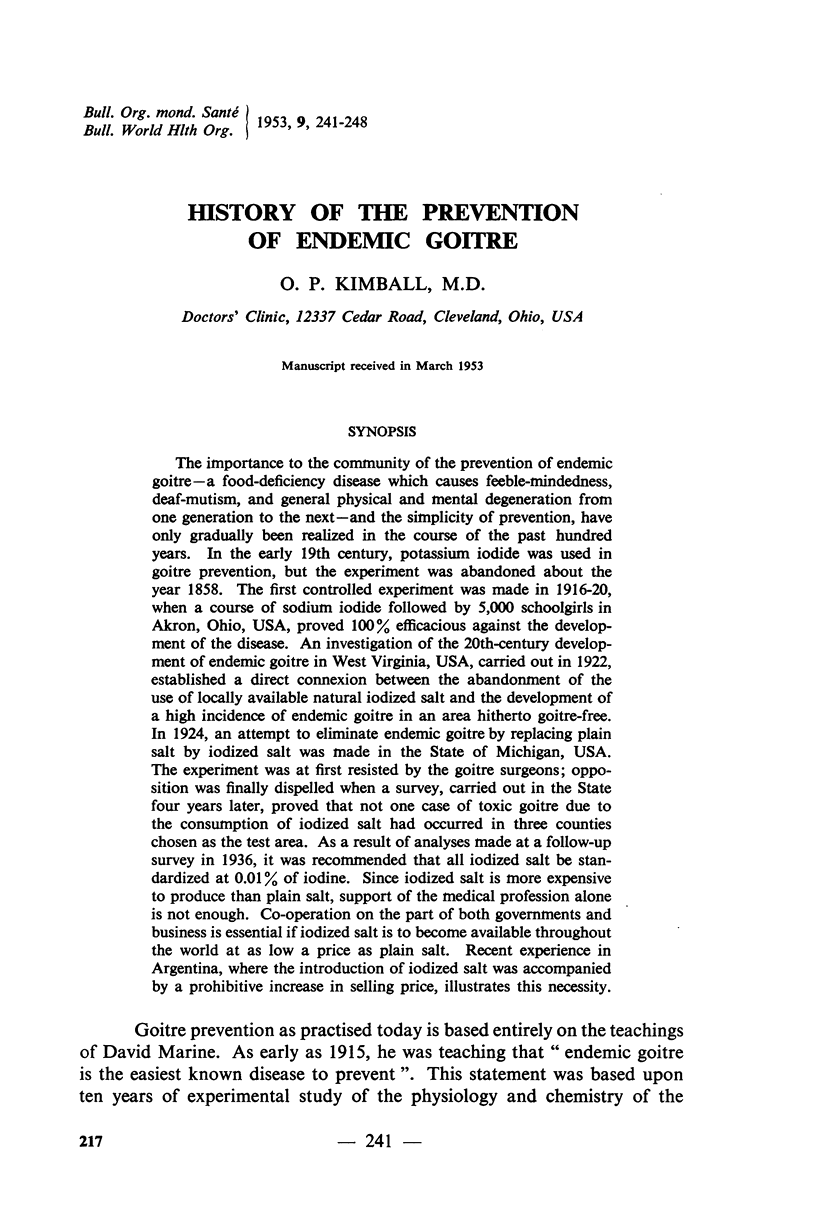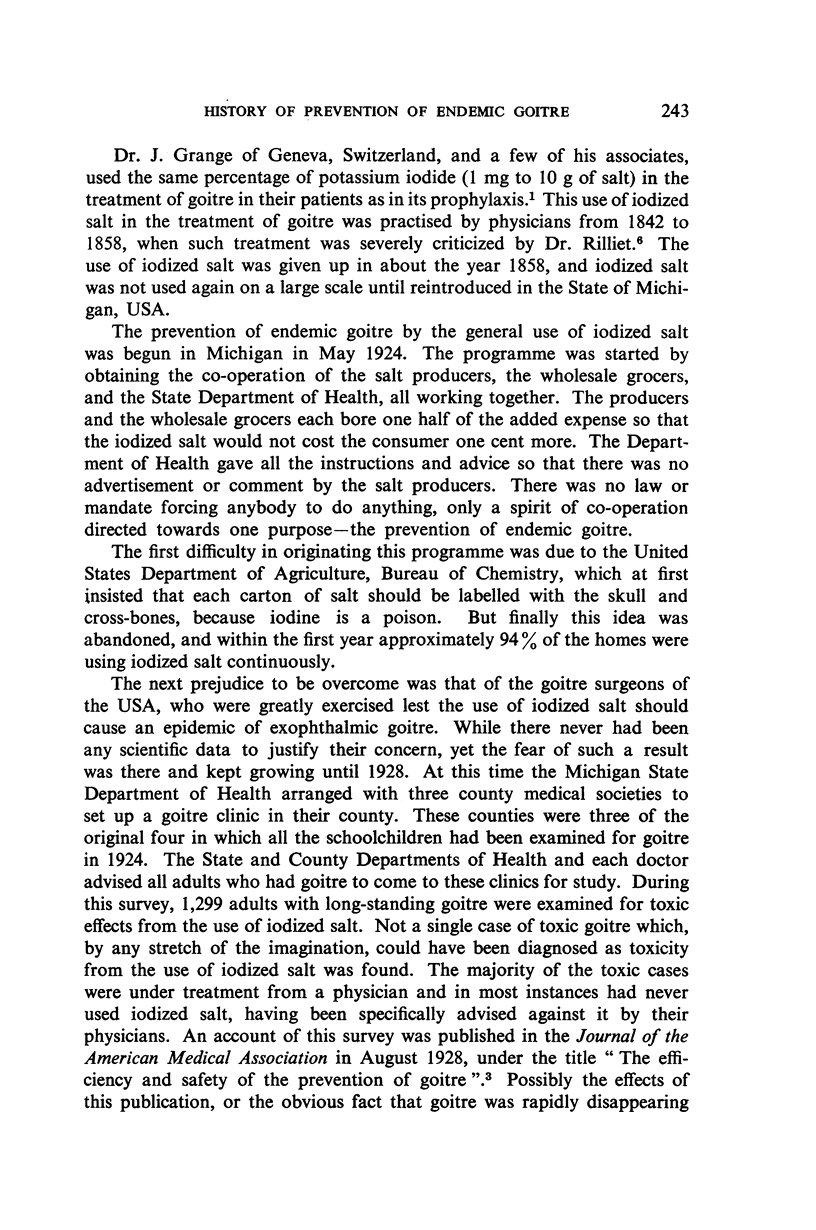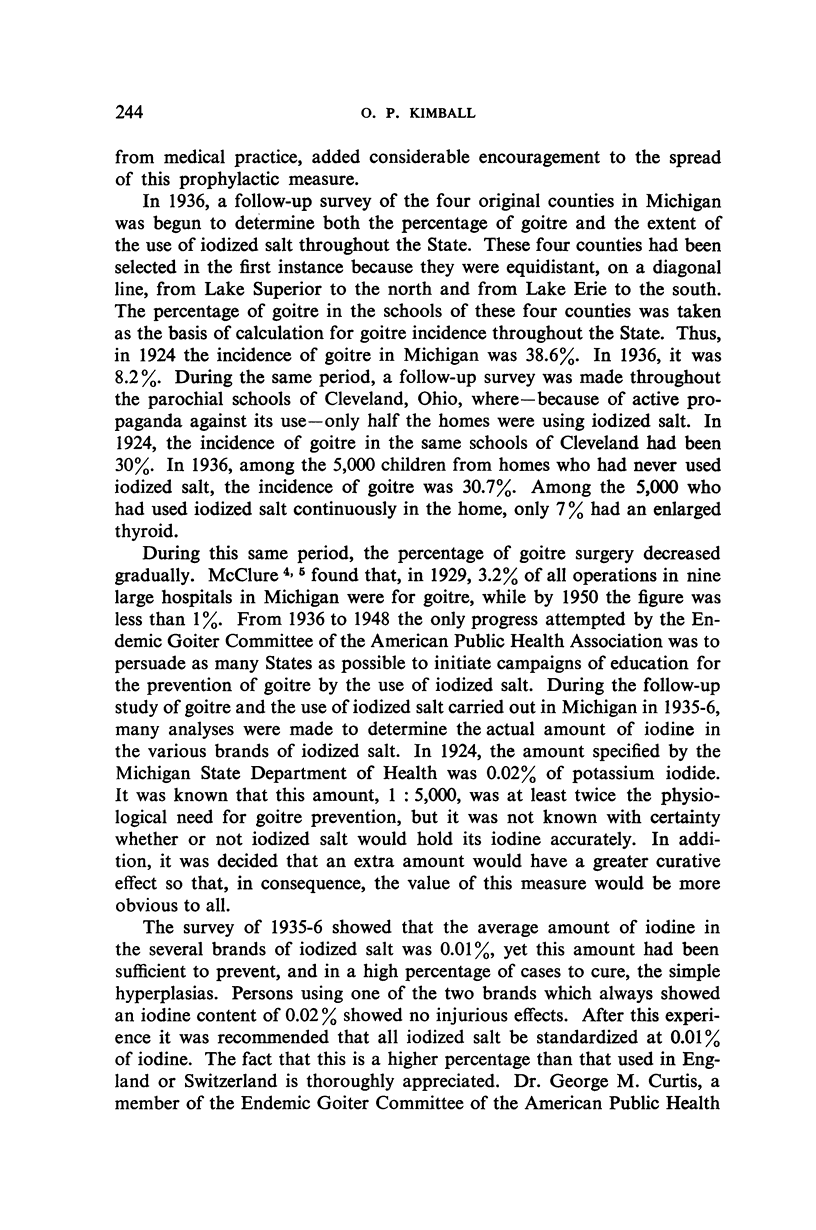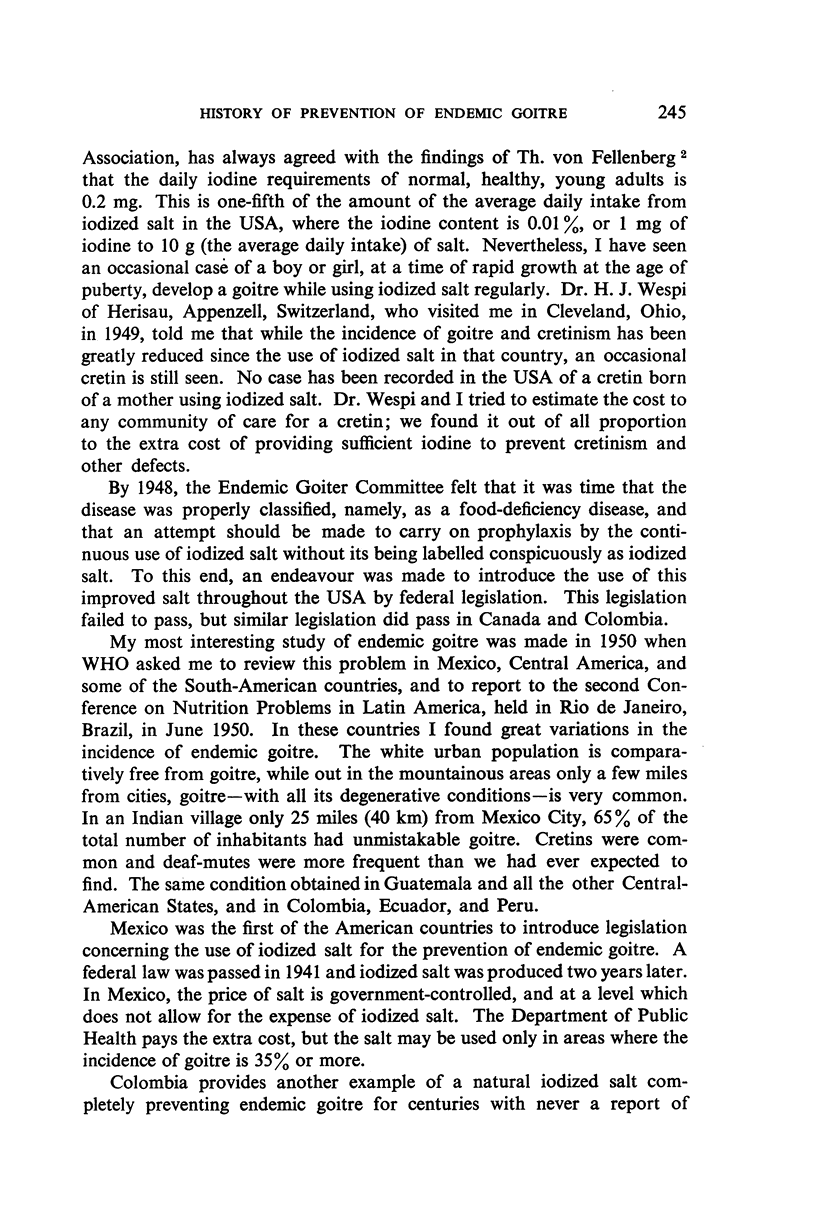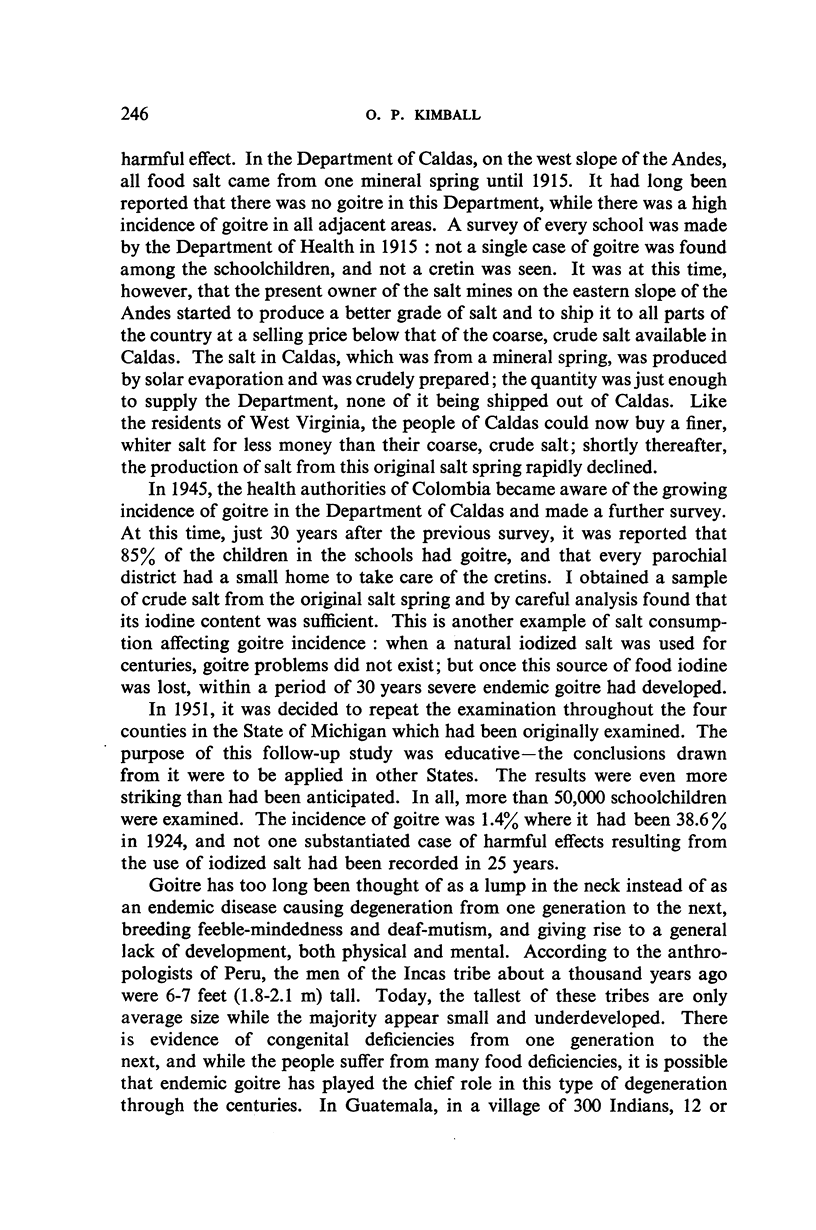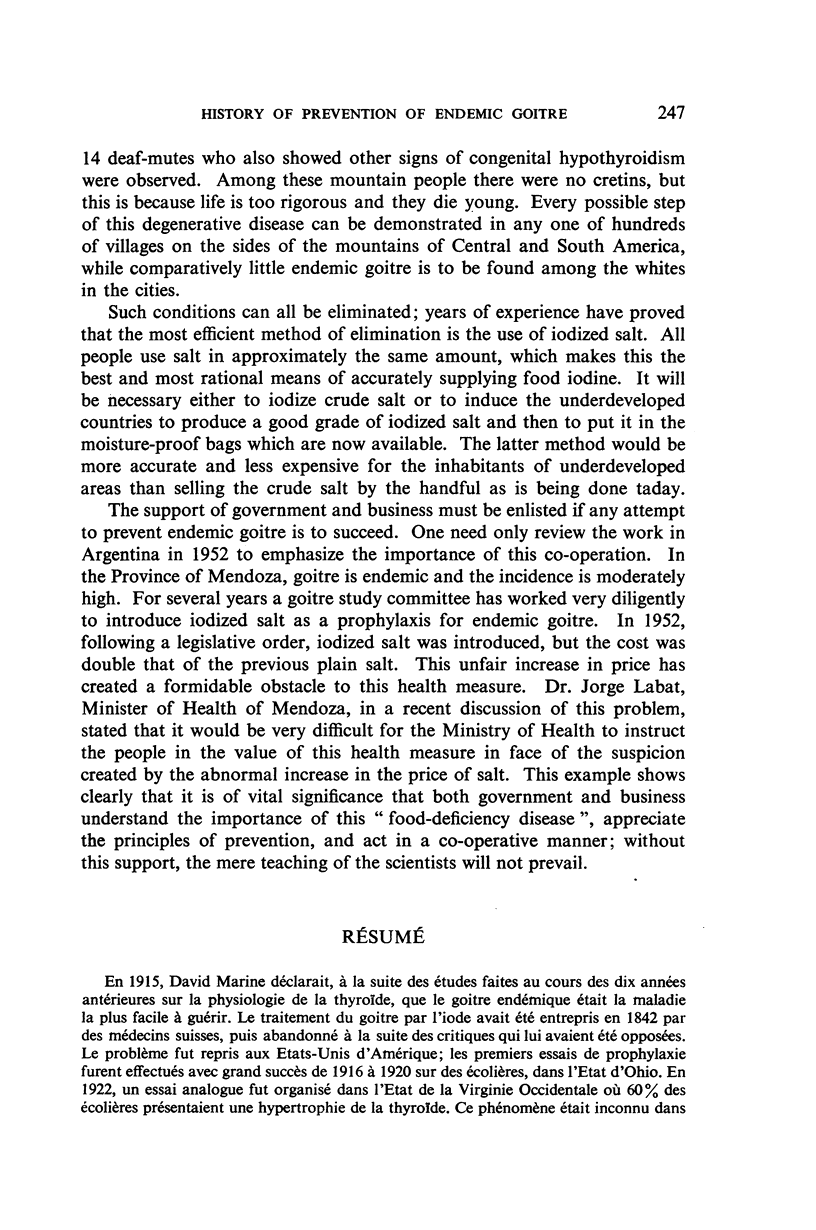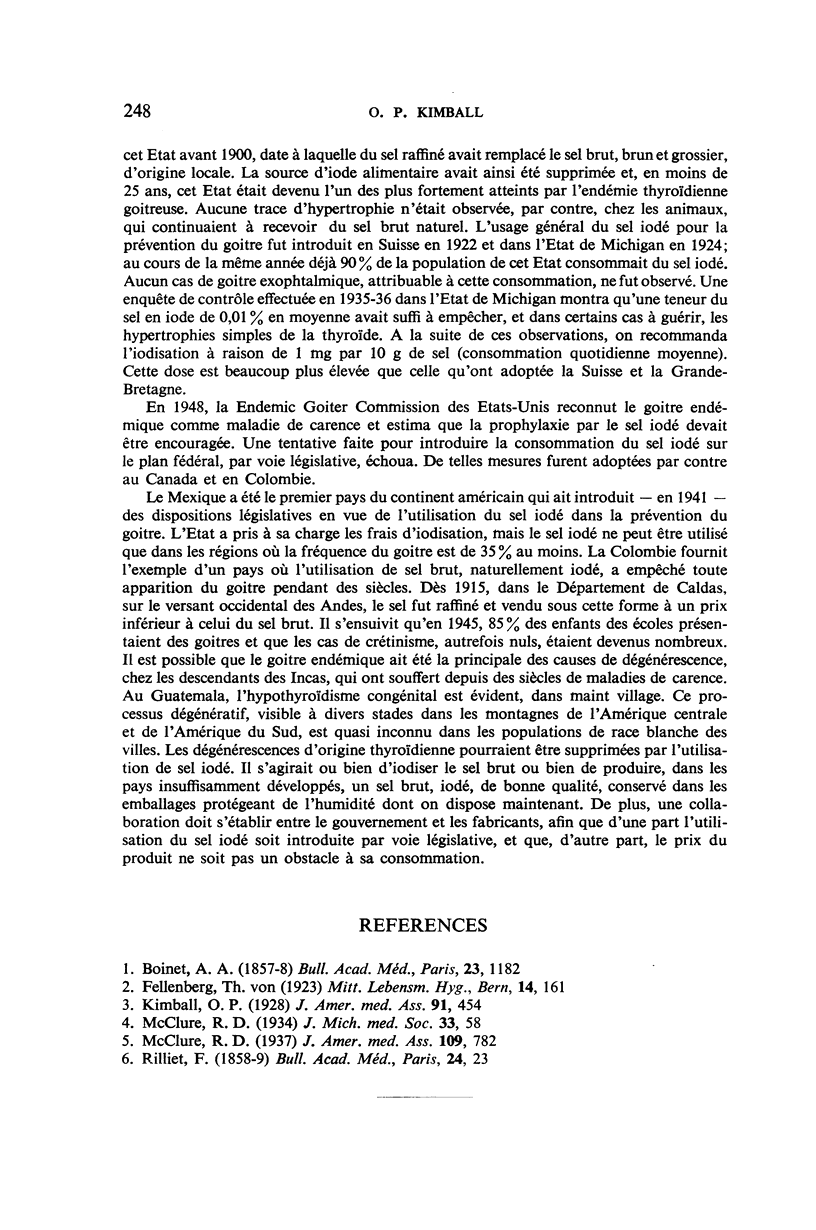Abstract
The importance to the community of the prevention of endemic goitre—a food-deficiency disease which causes feeble-mindedness, deaf-mutism, and general physical and mental degeneration from one generation to the next—and the simplicity of prevention, have only gradually been realized in the course of the past hundred years. In the early 19th century, potassium iodide was used in goitre prevention, but the experiment was abandoned about the year 1858. The first controlled experiment was made in 1916-20, when a course of sodium iodide followed by 5,000 schoolgirls in Akron, Ohio, USA, proved 100% efficacious against the development of the disease. An investigation of the 20th-century development of endemic goitre in West Virginia, USA, carried out in 1922, established a direct connexion between the abandonment of the use of locally available natural iodized salt and the development of a high incidence of endemic goitre in an area hitherto goitre-free. In 1924, an attempt to eliminate endemic goitre by replacing plain salt by iodized salt was made in the State of Michigan, USA. The experiment was at first resisted by the goitre surgeons; opposition was finally dispelled when a survey, carried out in the State four years later, proved that not one case of toxic goitre due to the consumption of iodized salt had occurred in three counties chosen as the test area. As a result of analyses made at a follow-up survey in 1936, it was recommended that all iodized salt be standardized at 0.01% of iodine. Since iodized salt is more expensive to produce than plain salt, support of the medical profession alone is not enough. Co-operation on the part of both governments and business is essential if iodized salt is to become available throughout the world at as low a price as plain salt. Recent experience in Argentina, where the introduction of iodized salt was accompanied by a prohibitive increase in selling price, illustrates this necessity.
Full text
PDF